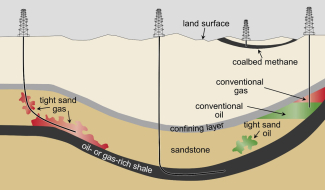
Low-permeability formations are routinely fractured to improve the well productivity. Horizontal wells become the norm in shale and very low-permeability formations. Multiple transverse hydraulic fractures are usually created to maximize contact area with the reservoir rock. In some cases, an excess of 100 transverse hydraulic fractures may be created per horizontal well. Specialized testing can provide the intrinsic rock properties.
Pressure data are analyzed to obtain reservoir parameters and/or fracture geometry characteristics, such as formation permeability, fracturing fluid efficiency, near wellbore tortuosity, among others. Naturally, the combination of very low-permeability formation, the presence of natural fractures, and the presence of hydraulic fractures create a very complicated situation that requires the development of specialized testing and techniques to analyze the transient tests.
The TLPFRC consortium is focused on the development of new solutions for analysis of pressure, temperature, and rate data that may be used to analyze those tests and to determine reservoir and fracture properties. The consortium takes a rigorous and holistic approach in analyzing the diagnostic fracture pressure data and production data (rate and pressure) to determine formation and fracture characteristics. The analyses pertain to both injection and shut-in periods for before and after fracture closure.